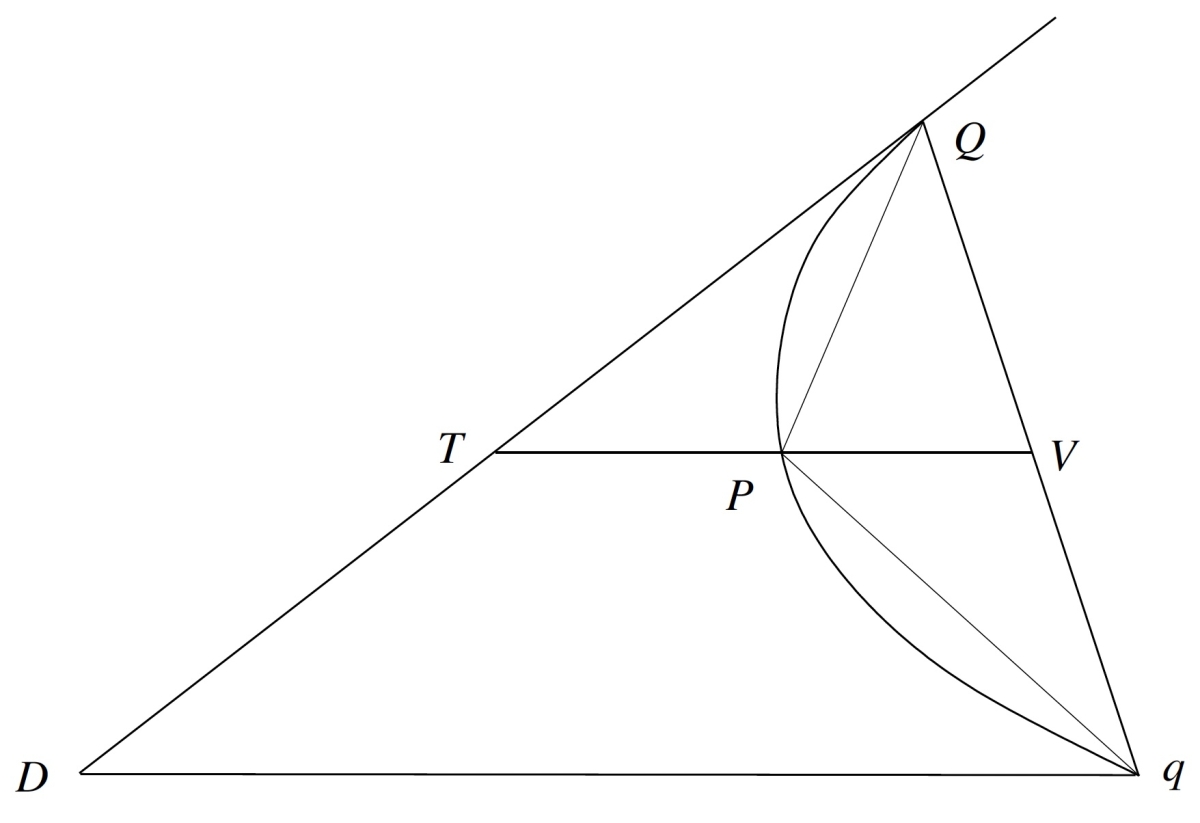- About MAA
- Membership
- MAA Publications
- Periodicals
- Blogs
- MAA Book Series
- MAA Press (an imprint of the AMS)
- MAA Notes
- MAA Reviews
- Mathematical Communication
- Information for Libraries
- Author Resources
- Advertise with MAA
- Meetings
- Competitions
- Programs
- Communities
- MAA Sections
- SIGMAA
- MAA Connect
- Students
- MAA Awards
- Awards Booklets
- Writing Awards
- Teaching Awards
- Service Awards
- Research Awards
- Lecture Awards
- Putnam Competition Individual and Team Winners
- D. E. Shaw Group AMC 8 Awards & Certificates
- Maryam Mirzakhani AMC 10 A Awards & Certificates
- Two Sigma AMC 10 B Awards & Certificates
- Jane Street AMC 12 A Awards & Certificates
- Akamai AMC 12 B Awards & Certificates
- High School Teachers
- News
You are here
A Translation of Evangelista Torricelli's Quadratura Parabolae - Some Prerequisites for Reading the Translation
Some Prerequisites for Reading the Translation
De Dimensione Parabolae builds on the geometrical tradition that mathematicians in the seventeenth century inherited from Euclid and Archimedes. The primary goal of the work is to establish equivalences between many classical results in geometry and Archimedes' well-known result from the Quadrature of the Parabola, so it's necessary to have some familiarity with these results. These, in turn, rely on results in Book V and Book VI of Euclid's Elements. However, our translation begins in the middle of a larger work, and Torricelli sometimes refers to earlier results in this work. For the sake of completeness, we summarize these here. More details on the mathematical background of this work can be found in [Leahy, pp. 175-177].
Lemma 3: If a parabola were to have three tangents, two at the base and a third through the vertex, the triangle comprised by the tangents will be eight times the triangle which arises from a fourth tangent having been drawn through the vertex of either semiparabola.
Lemma 3 is referenced in Proposition 15, where Torricelli generalizes Archimedes' result expressing the quadrature of the parabola in terms of a triangle inscribed inside of a parabola to the triangle comprised of the three given tangent lines to the parabola.
Lemma 7: If a triangle having the same base and the same altitude as the parabola is inscribed in a parabola, two other triangles are also inscribed in like manner in the remaining portions. The triangle inscribed first will be eight times either of the triangles inscribed afterwards.
As Torricelli notes, "This Lemma is demonstrated by Archimedes in Proposition 21 of Quadrature of the Parabola". It will also be demonstrated by us below.
Lemma 11: An entire semiparabola hangs at equilibrium from a point on the base in which it is thus divided so that the part terminated at the curve is to the remaining part as five is to three.
Lemma 11 generalizes Archimedes' result on the center of gravity of a segment of the parabola found in Book II of On the Equilibrium of Planes.
Lemma 18: If a first magnitude were to a second thus as a third is to a fourth, and thus however many times it is pleasing, and if all of the firsts and also all of the thirds are equal among themselves, then all of the first magnitudes together are to all of seconds together, as all of the thirds together are to all of the fourths.
Lemma 18 is Torricelli's version of Cavalieri's Principle. It is generalized in Lemma 29, which is stated and proved in the translation below.
Torricelli also cites, e.g., "the explanation of Proposition 9" at several points, referring to the proof of this Proposition. This proof establishes a result (also established in Propositions 16 and 17 of Archimedes' Quadrature of the Parabola [Heath, pp. 244-246]) which is equivalent to Archimedes' result on the area of a parabola: Construct the "tangent triangle" to the segment of the parabola, consisting of the tangent line \(DQ\) at one end of the base \(Qq\) of the segment of the parabola, the base itself, and a line \(Dq\) parallel to the diameter \(PV\) through the other endpoint \(q\) of the base.

Then \(\frac{1}{4}\triangle DqQ=\triangle QPq\). Why? Proposition I.35 of the Conics of Apollonius of Perga (262-190 BCE) [Apollonius, p. 62] shows that \(TP=PV\). Thus, triangles \(\triangle TQV\) and \(\triangle QPq\) have the same area. A similarity argument shows that \(\triangle DqQ\) has four times the area of \(\triangle TVQ\). Thus, \(\frac{1}{4}\triangle DqQ=\triangle QPq\), and so to show that \(area(Parab(QPq))=\frac{4}{3}\triangle QPq\), it is necessary and sufficient to show that \(area(Parab(QPq))=\frac{1}{3}\triangle QDq\).
Andrew Leahy (Knox College), "A Translation of Evangelista Torricelli's Quadratura Parabolae - Some Prerequisites for Reading the Translation," Convergence (February 2017)




